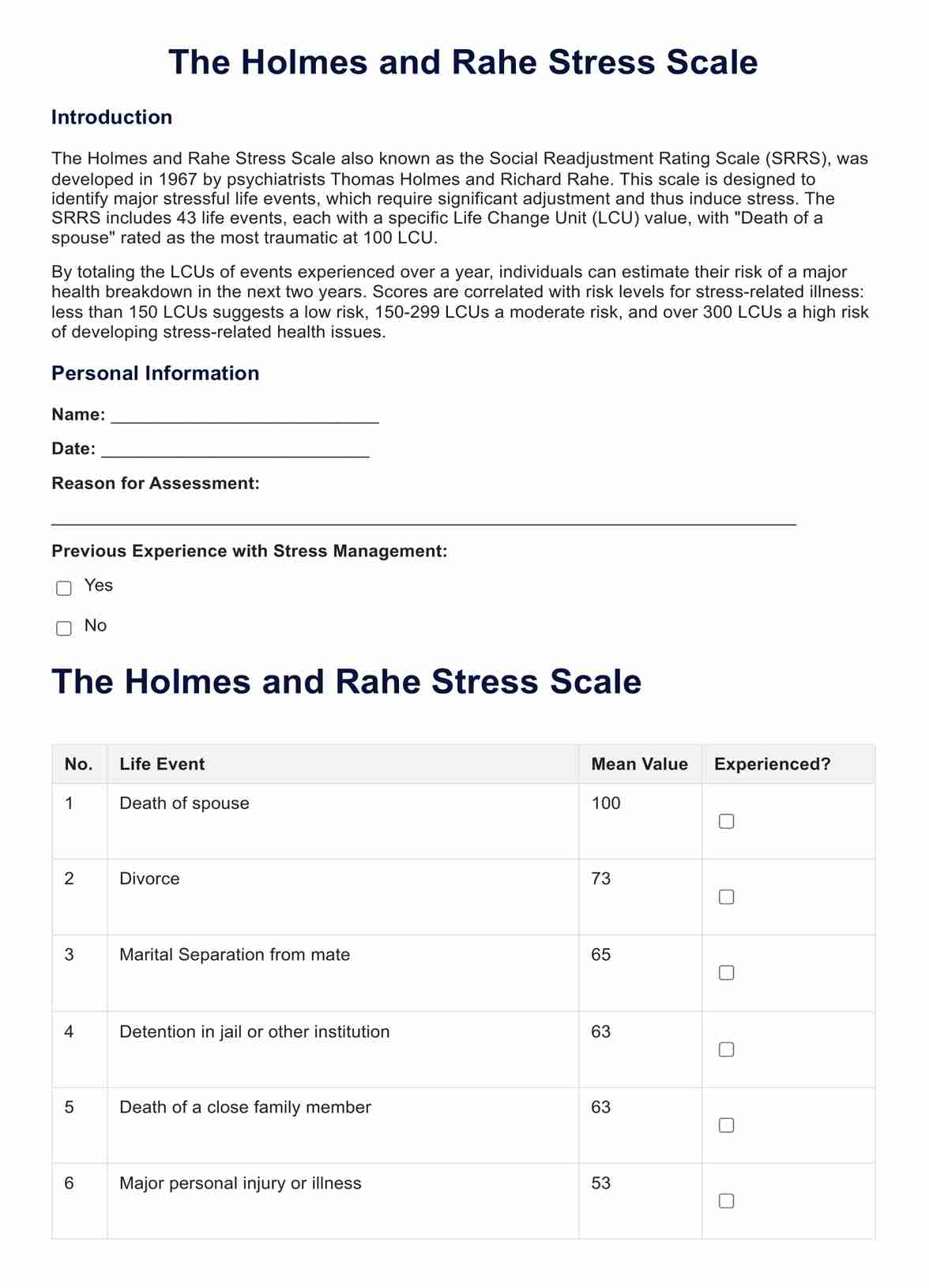The Holmes and Rahe Stress Inventory, also known as the Rahe Stress Scale, is a tool used to measure the level of stress in individuals. It assesses the impact of various life changes and personal habits on an individual's stress levels. Assigning a relative score to different life events helps understand how these changes can contribute to stress-related health issues.

The Holmes and Rahe Stress Scale
Utilize the Holmes and Rahe Stress Scale for effective stress management. Access our detailed, free guide to get started!
The Holmes and Rahe Stress Scale Template
Commonly asked questions
The Stress Scale evaluates subjects by asking them to recount significant life events and personal habits from the preceding year. This includes changes in eating habits, illness behavior, and interactions with close family members or friends. The scale then assigns a score to each event, helping to determine the cumulative stress level and its potential impact on health.
The Holmes and Rahe Stress Scale has been used in cross-cultural studies to understand how different cultures perceive and react to stress. While initially developed based on American populations, its application has been extended to various cultures, providing valuable insights into how stress factors vary across different cultural contexts.
EHR and practice management software
Get started for free
*No credit card required
Free
$0/usd
Unlimited clients
Telehealth
1GB of storage
Client portal text
Automated billing and online payments











